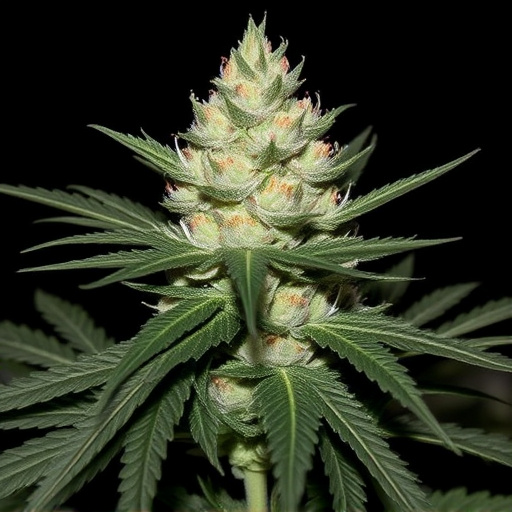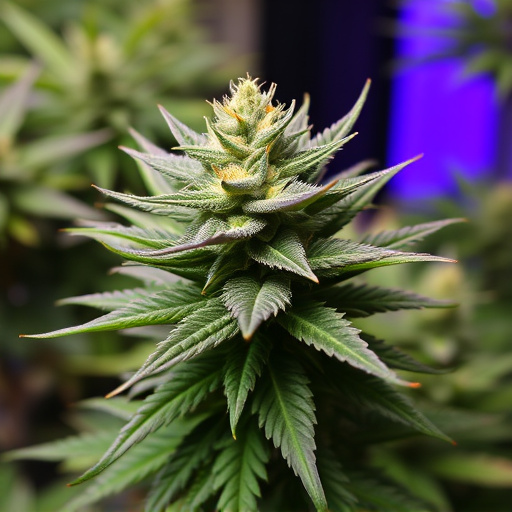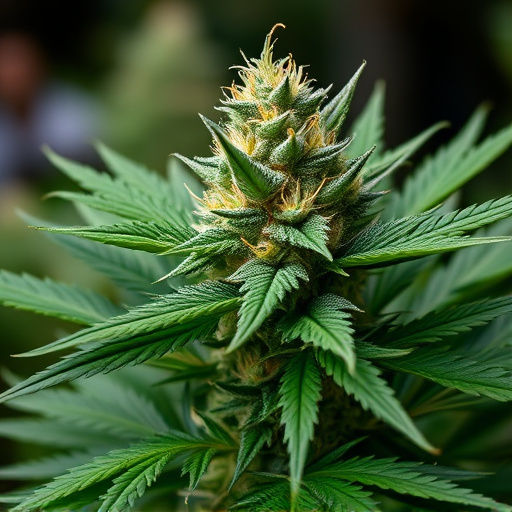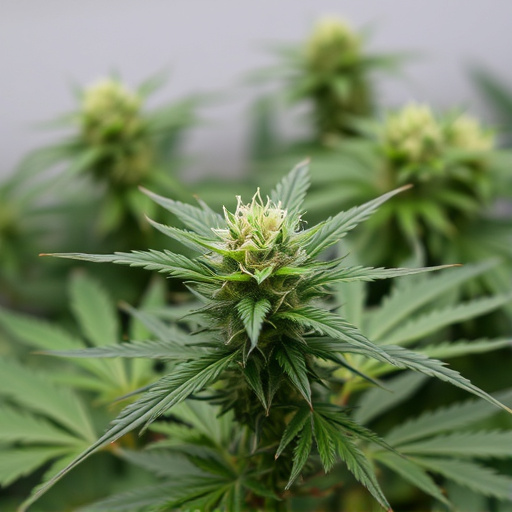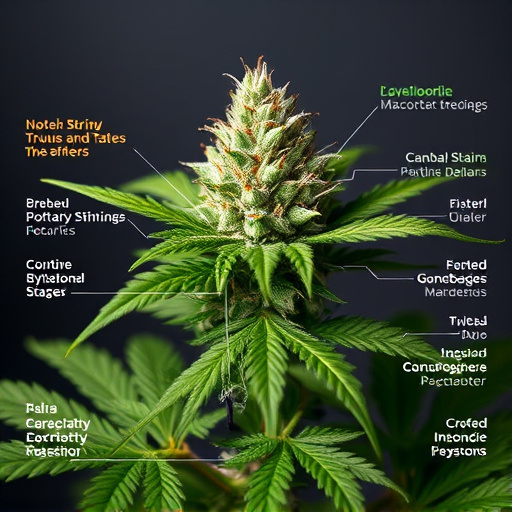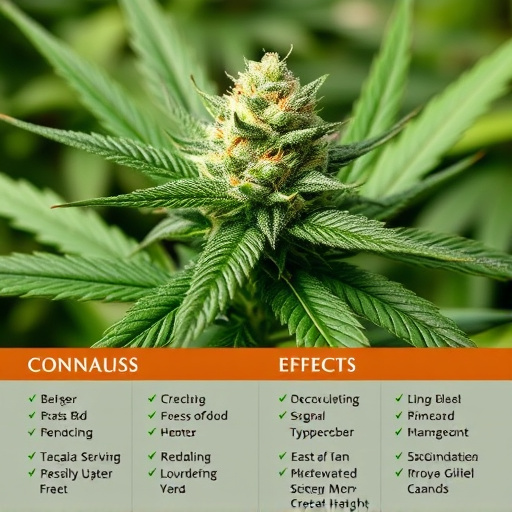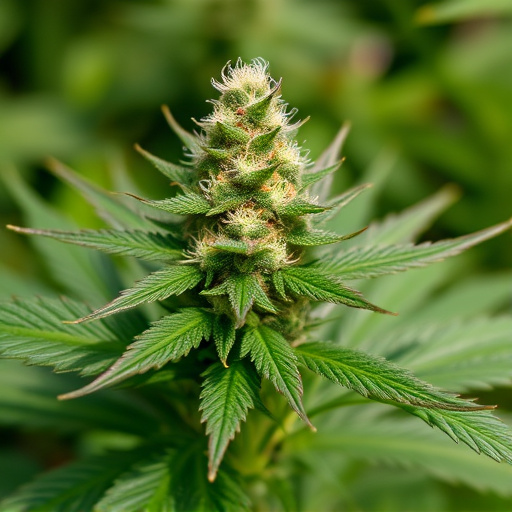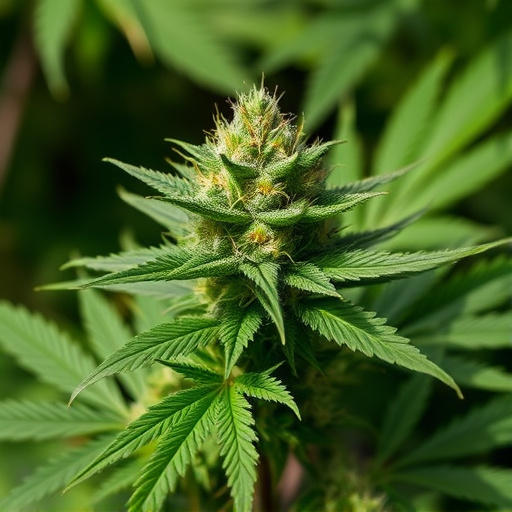Cannabis indica strains' unique effects stem from their complex interplay of terpenes (like myrcene, limonene, linalool) and cannabinoids (primarily THC and CBD). These chemicals contribute to indica's relaxing and calming attributes, with CBD offering medical benefits like pain relief. Indica's distinct scent comes from terpenes enhancing the overall cannabis experience; for instance, myrcene's earthy aroma is linked to relaxation and sleepiness. Terpenes modulate the plant's impact on the body, providing various effects that make indica strains popular choices for relaxation and pain management without mental stimulation.
“Unraveling the mysteries of Indica cannabis flower and its profound effects on both mind and body is essential for understanding this popular strain. Known for its relaxing properties, Indica’s unique chemical composition, rich in terpenes and cannabinoids, plays a pivotal role in its therapeutic potential. This article delves into the intricate chemistry of Indica, exploring how its key components interact with our bodies to induce relaxation, stimulate appetite, alleviate pain, and offer mental health benefits. Discover the science behind cannabis strains and their diverse effects on well-being.”
- The Chemistry of Indica Cannabis: Terpenes and Cannabinoids
- – A breakdown of the chemical composition of indica strains
- – Key terpenes and their impact on the body's response
The Chemistry of Indica Cannabis: Terpenes and Cannabinoids
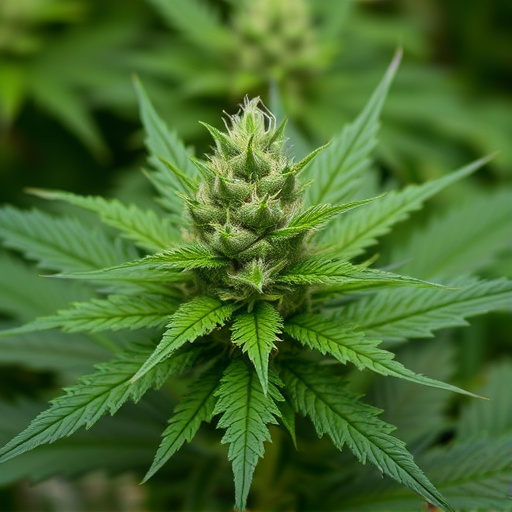
The chemistry of indica cannabis is a fascinating realm where terpenes and cannabinoids intertwine to create a unique spectrum of effects, often associated with relaxing and calming sensations. Terpenes, aromatic compounds found in many plants, contribute to the distinctive scents and flavors of different cannabis strains. In indica varieties, specific terpenes like myrcene, limonene, and linalool play a significant role in their therapeutic attributes. Myrcene, for instance, is known for its earthy scent and potential anti-inflammatory properties.
Cannabinoids, on the other hand, are chemical compounds that interact with the body’s endocannabinoid system (ECS). Indica cannabis strains typically contain higher levels of cannabidiol (CBD) and tetrahydrocannabinol (THC), two prominent cannabinoids. While THC is responsible for the psychoactive effects, CBD offers a range of potential medical benefits, including pain relief, reduced anxiety, and anti-inflammatory actions. The delicate balance between terpenes and cannabinoids in indica strains contributes to their distinct effects on the body, making them popular choices for those seeking relaxation and pain management without the mental stimulation associated with some sativa strains.
– A breakdown of the chemical composition of indica strains
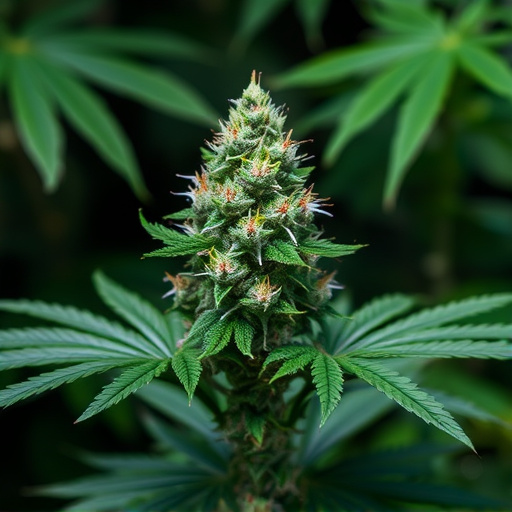
Indica cannabis flowers are renowned for their distinct chemical composition, which contributes to their unique effects on the body. These strains are typically high in cannabinoids like tetrahydrocannabinol (THC) and cannabidiol (CBD), with THC often being the dominant compound. The specific ratios of these chemicals vary among indica varieties, leading to a range of desired effects.
The chemical profile of indica strains also includes various terpenes, which are aromatic compounds that further influence their taste and smell. Terpenes like myrcene, pinene, and linalool are commonly found in indicas and are believed to enhance the overall cannabis experience. Myrcene, for example, is known for its earthy scent and potential sedative properties, contributing to feelings of relaxation and sleepiness often associated with indica-dominant strains.
– Key terpenes and their impact on the body's response
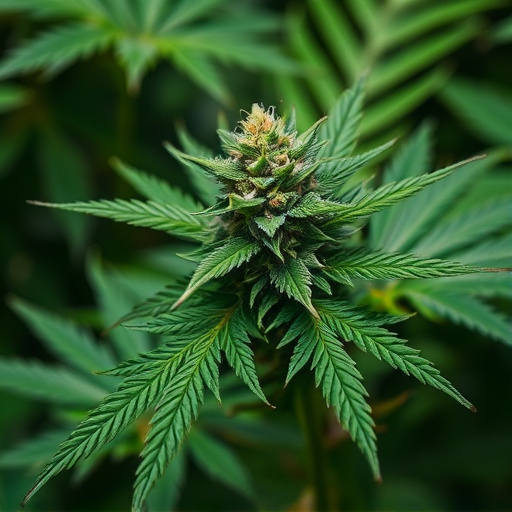
Cannabis strains, particularly Indica varieties, owe much of their unique effects to key terpenes present in the flower. Terpenes are aromatic compounds that not only contribute to the distinct scent and flavour of different cannabis strains but also play a crucial role in modulating the plant’s impact on the body. One prominent terpene found in many Indica strains is myrcene, known for its earthy, musky aroma. Research suggests that myrcene has anti-inflammatory properties and can potentially help alleviate pain and reduce anxiety, making it a popular choice among users seeking relaxation and sleep aid.
Another significant terpene in Indica cannabis is linalool, often associated with floral and citrus notes. Linalool has gained recognition for its calming effects, promoting feelings of tranquility and improving sleep quality. This terpene is believed to interact with the body’s endocannabinoid system, targeting receptors involved in stress response and pain perception. Additionally, limonene, with its bright, citrusy profile, is linked to uplifting mood effects and has been studied for its potential benefits in reducing symptoms of depression and anxiety. Together, these terpenes contribute to the distinctive relaxing and soothing attributes often associated with Indica strains, further enhancing the overall cannabis experience.
Indica cannabis flowers, with their distinct chemistry of terpenes and cannabinoids, offer unique effects that cater to various needs. Understanding the specific compounds within indica strains allows users to make informed choices based on desired outcomes, whether seeking relaxation, pain relief, or cognitive enhancement. The body’s response to these compounds underscores the multifaceted impact of cannabis strains on our well-being, highlighting the importance of researching and selecting the right strain for individual experiences.
